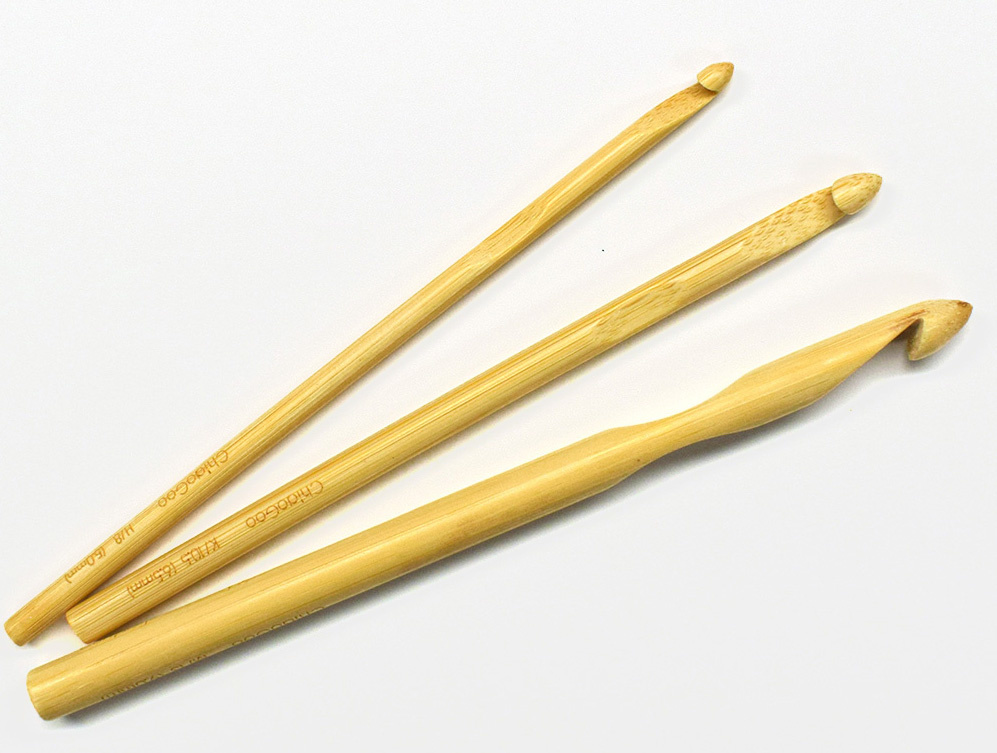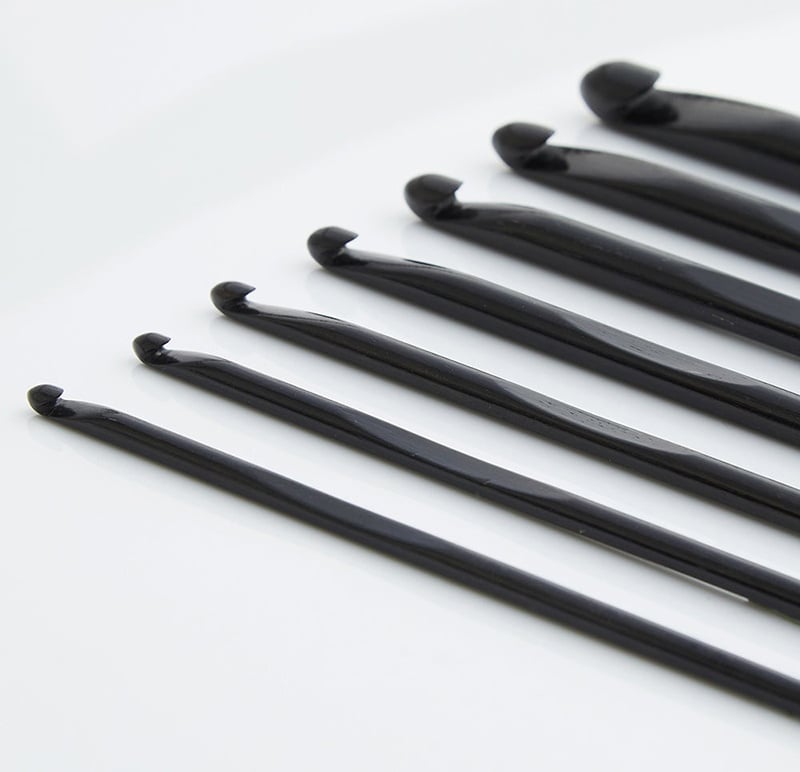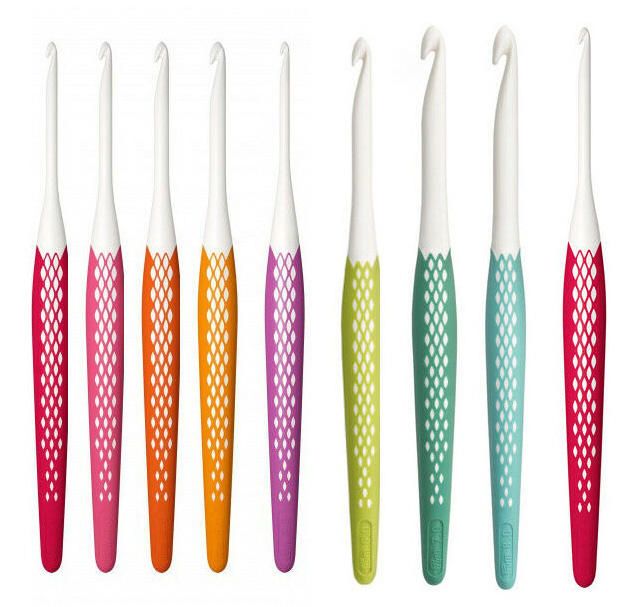Crochet Hook Anatomy
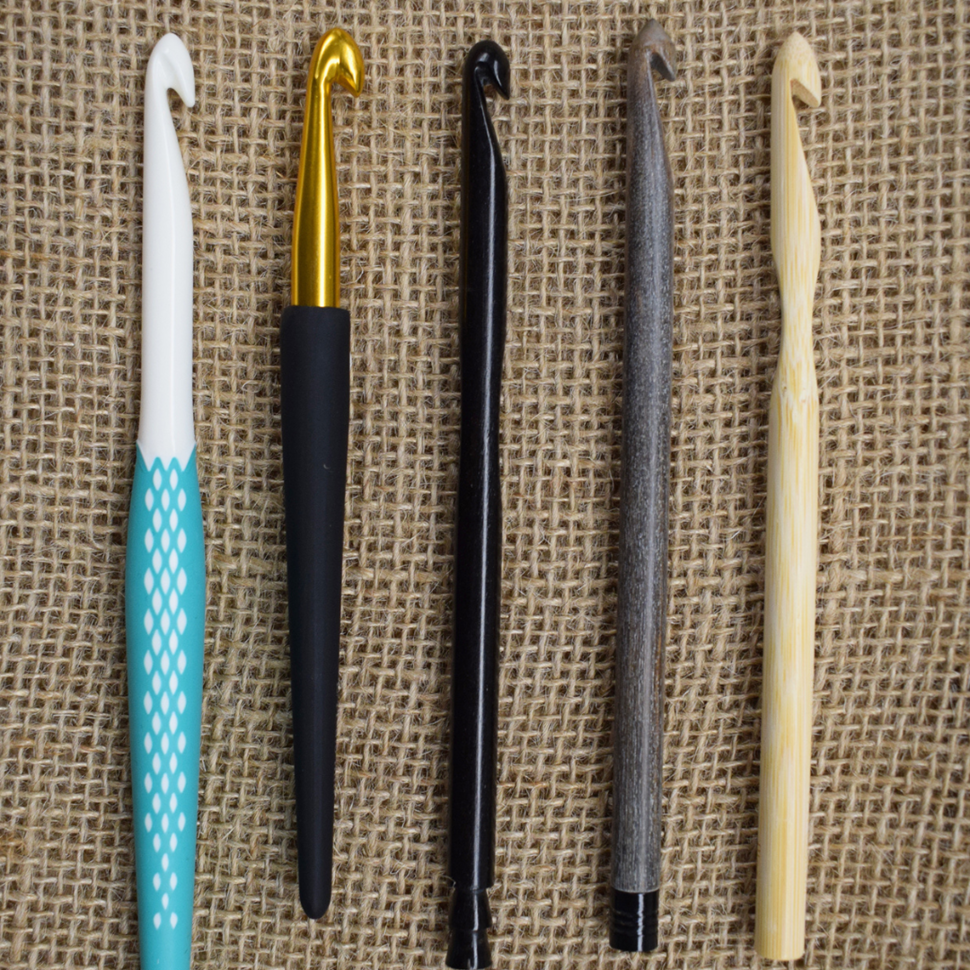
Let's take a very close look at crochet hooks. If you thought there was a lot to know about knitting needles, crochet hooks are far more complex!
We’ll start with the anatomy of a hook.

- The HEAD or POINT pokes through the stitches.
- The NECK or THROAT is where the yarn rests on the hook as you poke it through.
- The loops rest on the SHAFT, which determines the size of the stitches.
- The THUMB REST or GRIP is held with your thumb and a finger or two as you maneuver the hook.
- The HANDLE is where your hand rests, providing leverage as you move the hook.
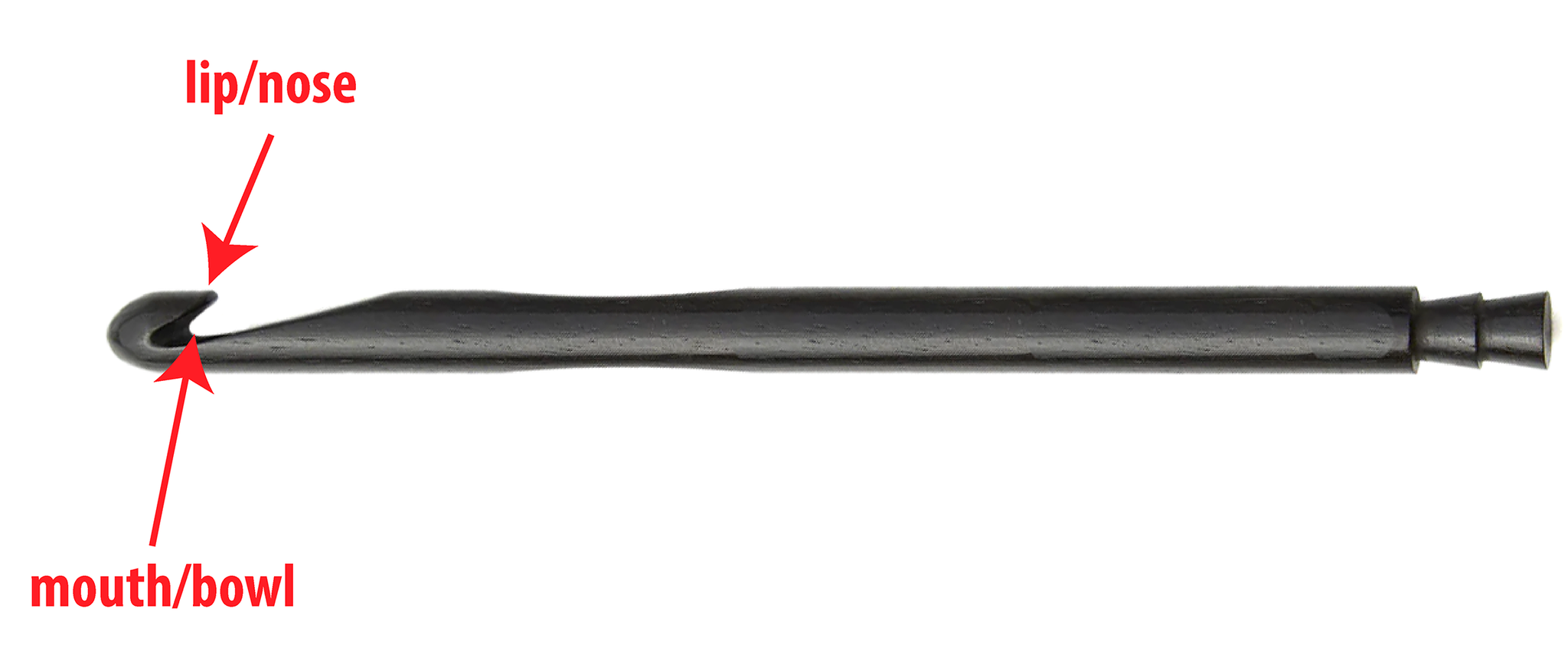
- As you look closer at the head, you will see a MOUTH or BOWL that holds the yarn as it moves through the stitches.
- And the very tip of the head is referred to as a LIP or NOSE, which keeps the yarn in the MOUTH while forming the stitch.
Just the anatomy of a hook is already more involved than knitting needles, and we’re just starting!
There are two basic types of crochet hooks: INLINE and TAPERED.

With INLINE hooks, the head is inline with the shaft. As a result, the shaft will be the same width as the neck, it has a deeper mouth, and the head is usually more pointed. Some attribute inline hooks to achieving a more even tension since the shaft is a consistent size. And the pointier head may poke through the stitches a bit easier. The deep groove of the inline hook could cause you to twist the hook a bit more to complete the stitch, slowing you down a smidge and contributing to wrist pain.

With TAPERED hooks, the head extends out past the shaft. As a result, the shaft tapers, making it more narrow than the shaft. The mouth may be less deep and the point a bit more round. Tapered hooks are considered a bit faster to use, easier on the wrist, and some like the less pointed head, especially with splitty yarns.
Is one type better than the other? Not necessarily. Consider switching to an inline hook if you have trouble with uneven tension. Try a tapered hook if you are experiencing wrist pain or splitting stitches.
Most of the hooks we sell are inline hooks. They are the most popular type of hook.
Chiaogoo bamboo hooks are inline hooks with a deeply grooved thumb rest.
Lykke hooks are inline with the shaft extending across to the handle at the same width, without an indented thumb rest.
Lantern Moon, also an inline hook, has a slightly grooved thumb rest. You’ll notice its head is less pointed than with the ChiaoGoo or Lykke.
Knitter’s Pride is the only tapered hook we currently stock. Its rounded head and ergonomic handle make it a popular choice.
Prym is also an ergonomic hook, but unlike the Knitter’s Pride, it is an inline-type hook.
Now that we’ve looked at the anatomy and types of hooks let’s talk sizing. If you thought knitting needle sizing was confusing, crochet hooks are even crazier!
Crochet Hooks can have up to three size designations.
- The US letter size continues to be the most common, A, B, C, etc. However, these designations did not necessarily correlate to a constant measurement like US needle sizes.
- The millimeter size is the most accurate in that it designates the diameter of the shaft in millimeters.
- There is also a US number size. Although we’re not seeing this as much, it continues to pop up on packaging and patterns, corresponding with the same size designations as US knitting needles. That's not confusing at all!
For example, a size H hook is a 5mm hook. You will sometimes see it labeled as size H/8. A 5mm knitting needle is also a size 8, hence the number 8 designation. It has less to do with knitting needles and more with the whacky US sizing system.
Just like with knitting needles, these US letter and number sizes do not encompass all of the sizes of hooks available. For example, there is no corresponding size for 4.5mm or 7mm hooks. Therefore you will find two size 7 hooks on the shelves - one size 7 is a 4.5mm, with the 7 being the US number size, but there is no letter size for this. It falls in between a G and an H.
There is also a 7mm size. You have to watch closely for the mm at the end of the 7. It is sometimes called a size K+ hook. Since the K can't be appended with a number, like a US 10.75 knitting needle, the manufacturers decided to throw a + at the end. That’s just clear as mud!
And when you get into larger hooks, you will find a lot of inconsistency in sizing. For example, one company’s size O or P could be different than the other - so always use the mm sizing as your guide and don’t simply rely on the letter size.
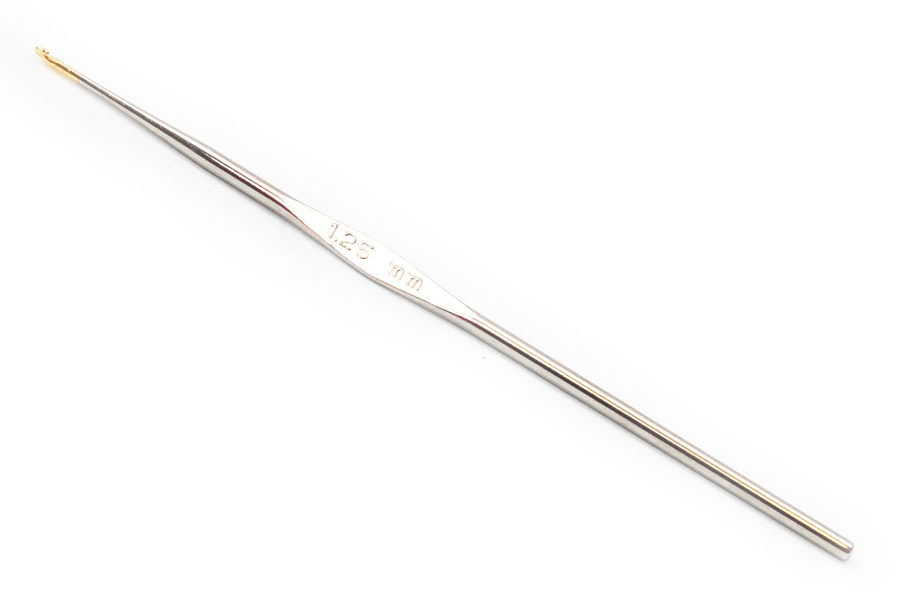
We currently don’t stock these, but the tiny steel hooks are still sized according to the Standard Wire Gauge system. The sizes get larger as the hooks get smaller. And this throws even more numbers into the mix. So you can have a size 7 steel hook, a US size 7 hook (which there is no letter size for), and a size 7mm hook.

We’re not even going to discuss British hook sizes. They’re not commonly referenced; I don’t want to confuse anyone further. On a side note, if you are using a British pattern, keep in mind that their stitches are different than everyone else. A British double crochet is what we call a single crochet; a triple is a double. Rowan and Sirdar crochet patterns are written with British terminology. Conversion charts are easy to find online, or when in doubt, carefully read the pattern instructions!
Shop our selection of crochet hooks online!

